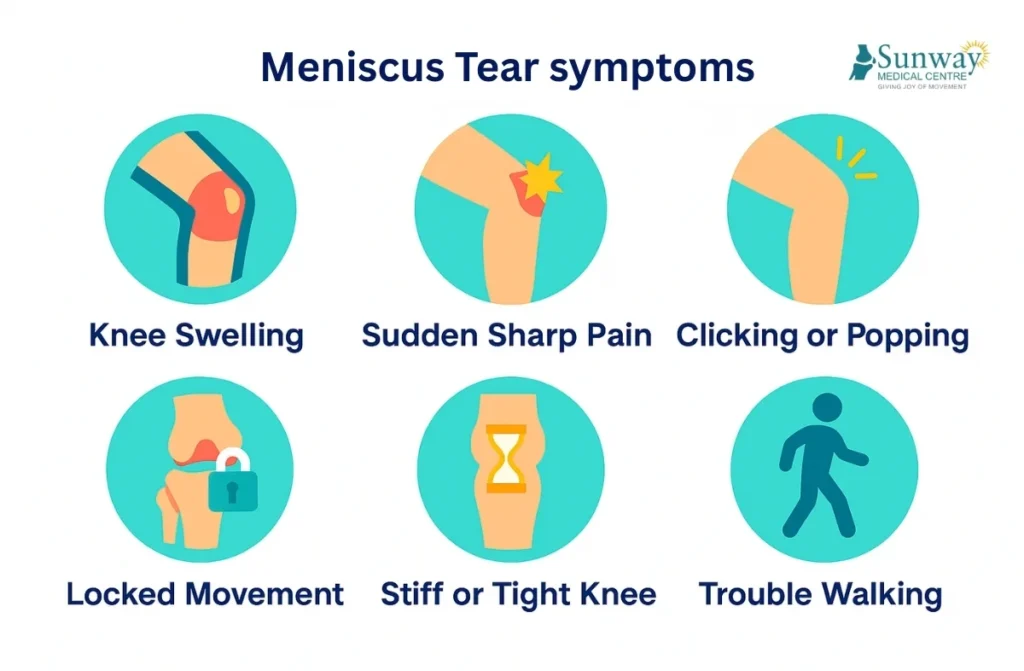You crouched to pick something up or turned your knee during a workout and now your knee just doesn’t feel right. Maybe it clicks, locks up, or swells more than usual. If this sounds familiar, you may be dealing with a torn meniscus.
Surgery for meniscus tears is a safe and effective option for many people, especially when the tear interferes with daily movement. In this article, we’ll walk you through what to expect, from early signs to recovery and preparation.
What Is Meniscus Surgery?
The meniscus is a rubbery, C-shaped cartilage in your knee that cushions and stabilizes the joint replacement surgery. Each knee contains two menisci—one positioned on the inner side (medial) and the other on the outer side (lateral). A tear can result from a sudden twist, deep squat, or gradual wear over time. When non-surgical treatments like rest or physical therapy aren’t enough, surgery for meniscus tears may be recommended. The most common approach is arthroscopic meniscus repair surgery, where a surgeon uses tiny instruments and a small camera to repair or trim the damaged tissue. This technique usually results in less pain and faster healing compared to traditional surgery.
Symptoms of Meniscus Tears
A torn surgery for meniscus tears doesn’t always show up right away. In some cases, you’ll feel a sudden “pop” at the time of injury. Other times, symptoms build gradually. Watch for these common indicators:
- Pain during twisting or bending
- A feeling that your knee is catching or locking
- Swelling or stiffness that doesn’t improve
- Difficulty fully straightening the leg
- Weakness or instability while walking
These signs often lead people to explore options like arthroscopic meniscus repair surgery when conservative care isn’t providing relief.
What Are the Benefits of Meniscus Surgery?
Choosing surgery for meniscus tears can offer significant improvement in both mobility and comfort. Key benefits include:
- Reduced pain during everyday activities
- Better knee function and stability
- Lower risk of long-term joint damage
- A quicker return to sports or exercise
- Shorter downtime with minimally invasive techniques
If you lead an active life or need to stay mobile for work or caregiving, arthroscopic meniscus repair can be a valuable step toward regaining your rhythm.

What Are the Complications of Meniscus Surgery?
Though most people recover well, it’s important to be aware of potential risks. These may include:
- Temporary swelling or stiffness
- Blood clots in the leg
- Infection at the incision site
- Incomplete healing of the tear
- Persistent pain or the need for further surgery
Sticking to your post-operative plan is essential to support a smooth arthroscopic meniscus repair recovery. Most complications are rare, especially when the surgery is done by a skilled orthopedic specialist.
Treatment Options with Dr. Karthik P Reddy
Not every arthroscopic meniscus repair recovery. Treatment depends on your age, activity level, and the tear’s severity and location.
Non-surgical options may include:
- Physical therapy
- Rest and elevation
- Anti-inflammatory medications
- Knee braces for support
When symptoms don’t improve or the tear affects daily function, your doctor may recommend surgery for meniscus tears. This decision is often based on imaging, physical exam findings, and your personal goals.
How Should I Prepare for Meniscus Surgery?
Getting ready for Surgery for Meniscus Tears doesn’t have to be stressful. Here’s how you can prepare:
- Talk to your surgeon about medications or supplements you may need to stop
- Arrange for transportation on the day of surgery
- Set up a recovery area at home with pillows, ice packs, and easy access to essentials
- Opt for loose, comfortable clothing on the day of your procedure.
- Practice gentle movements or stretches approved by your care team
Planning ahead can make arthroscopic meniscus repair recovery much more manageable, both physically and mentally.
Conclusion
A Surgery for Meniscus Tears can impact everything from daily walks to active adventures. With expert care from Dr. Karthik P Reddy, and when necessary, arthroscopic meniscus repair surgery, you can regain strength and mobility. Don’t ignore persistent knee pain today’s minimally invasive procedures offer quicker recovery and lasting relief. Discuss your options with a trusted specialist. With the right treatment, personalized rehab, and patience, your knee can heal and your active lifestyle can return stronger than ever.
